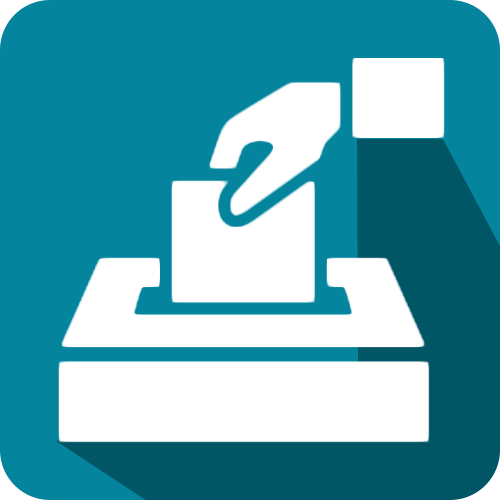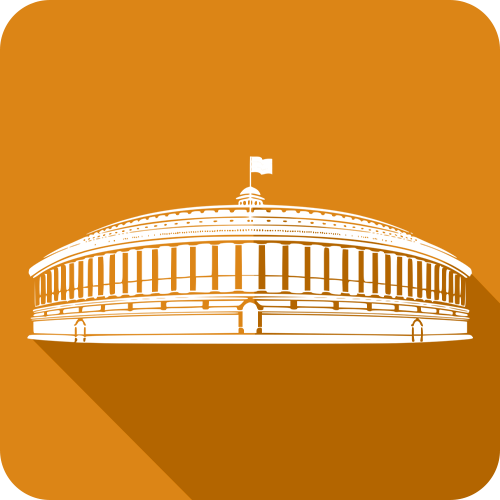List of Registered Political Parties in Gujarat
Political SCENARIO in India
The victory of BJP in the 2014 general elections of India has given a new dimension to the politics of India and the party has swept many elections since then. The re-election of Narendra Modi as the Prime Minister in 2019 has made him stronger than ever.
The current scenario of politics suggests that people are more educated in terms of making a decision to choose a government. The elections following 2017 have shown that the voters of India are clearly able to distinguish between the politics of the state and the national politics. It is evident from the winning spree of the Bharatiya Janata Party since 2014 for many state elections of India, largely because of the Modi wave. The opposition parties were reduced to their all-time low in Indian politics. Nevertheless, the opposition made a rebound since 2017 especially INC, while BJP lost many state elections. But the voters once again have surprised the parties by re-electing the Narendra Modi led government in the center. By winning more seats than the previous Lok Sabha election, PM Narendra Modi has emerged as the most powerful leader on the national front.
Elections in India
India is the largest democracy of the world and the elections of India are the largest election exercise. The people of India directly elect the Prime Minister by participating in the General/ Lok Sabha elections every five years.
Since India has adopted the bicameral system of legislature, the parliament is composed of a lower house (Lok Sabha) and Upper House (Rajya Sabha). The Federal government of India clearly distinguishes power between the central and the state governments.
The Parliament of India has 2 houses: Lok Sabha and Rajya Sabha. Lok Sabha: The members of Lok Sabha elect the Prime Minister of the country. It is also known as the lower house and comprises a total of 552 members. From states, 530 members are selected, while 20 members in the Lok Sabha represent the union territories. The members of the Lok Sabha (MPs) are elected every 5 years.
Rajya Sabha: Rajya Sabha is the upper house of the parliament. The total strength of the Rajya Sabha is 245 members and the term of each member is 6 years. Rajya Sabha is meant for the representation of states in the parliament and Rajya Sabha MPs are elected by the members of respective state assemblies/ Electoral college of UTs. ⅓ members of Rajya Sabha retire every 2 years.
The election commission of India is the apex and powerful body that administers elections. It employs Electronic Voting Machines (EVMs) for the election process. The elections for 17th Lok Sabha were scheduled between 11 April to 19 May 2019. BJP emerged as a single largest party winning 303 seats and Narendra Modi once again became the Prime Minister after 2014.



![]()
Right to Vote
A person fulfilling adult suffrage is eligible to vote as per the article 326 of the constitution. Based on the adult franchise, an adult in India can participate in the voting process upon fulfilling the other eligibility conditions set by the election commission. Earlier, the age was 21 but it has been reduced to 18 in 1989. A person who is not a citizen of India or has been barred from voting by law for indulging in malpractices can not participate in the voting process. Once a citizen enrolls as a voter, a voter ID card is issued by the election commission of India. With the order of the Supreme Court, the ECI has given the option of NOTA (None of the above) for anyone who wishes to participate in the voting but feels that none of the candidates deserves to be elected.
Election Process in India
For an election at any level of the federal model, the regions are divided into certain 'parts' by the delimitation commission of India. These parts of the regions are called as 'constituencies' for Lok Sabha/ Rajya Sabha/ State Legislative Assemblies. While these parts are called 'wards' in case of municipal corporations. A representative is chosen by the people of this area. In order to vote, a person must register his name in the Voter's list. Many candidates participate in the election, which can either be from a political party or an independent candidate. A candidate has to be approved by the election commission after filing the nomination. The candidates campaign for the election and campaigning stops before 48 hours of the election. The entire process is administered by the election commission of India and it announces the election results on the scheduled dates.
Political Parties in India
India has adopted the multi-party political system. A political party is formed by politicians on the basis of their ideologies and to achieve political goals. The election commission grants the 'National' or 'State' party status to a party upon fulfilling the criteria. There are eight national parties in India. These are; All India Trinamool Congress (AITC), Bahujan Samaj Party (BSP), Bharatiya Janata Party (BJP), Communist Party of India (CPI), Communist Party of India Marxist (CPIM), Indian National Congress (INC), Nationalist Congress Party (NCP), National People's Party (NPP). There are 53 state parties and 2538 unrecognized parties in India. Some of the popular state parties include Shiv Sena (SS), Aam Aadmi Party (AAP), Janata Dal-United (JDU), Janata Dal-Secular (JDs), Samajwadi Party (SP), etc.
India Election

Article 31 of the Constitution of India
Article 31 of the Constitution not only guarantees the right of private ownership but also the right to enjoy and dispose of property free from restrictions other than reasonable restriction.
List of Registered Political Parties in Gujarat
Posted by: duffywhailee.blogspot.com
Source: https://www.elections.in/

0 Response to "List of Registered Political Parties in Gujarat"
Post a Comment